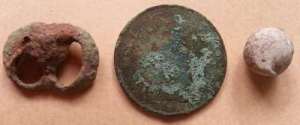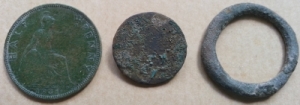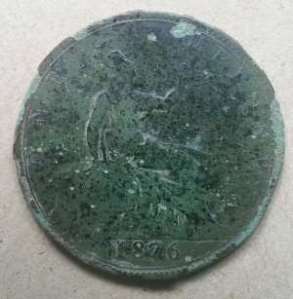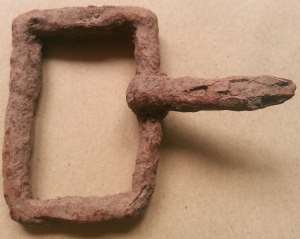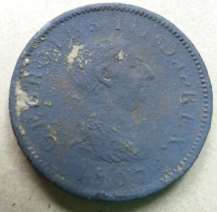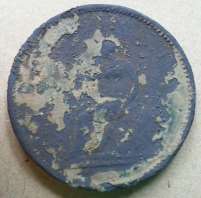On Sunday afternoon I headed back to the field I’ve been detecting recently.
I’ve been wondering how long I’d be able to get on it and today I found out. Not for much longer, as it happens, because one side has now been deep ploughed for some 20′ from the edge.
The effect of all the recent rain was plain to see. The cracks in the soil have almost closed up and are now only a few inches deep. More to the point, it’s a lot easier digging and suddenly there are signals where there hadn’t been any before. Unfortunately a lot of them were unmistakeably iron sounds but there were a handful of ambiguous to good signals which kept me occupied for a few hours.
My previous visits had covered most of two quarters in opposite corners of the field so the plan was to do one of the others in some depth and have a cursory scan of the fourth.
After an hour or two spent criss-crossing the 3rd quarter at various angles I’d found a musket ball, an iron ring and a strange strip of filigree-ish metal. My best guess about the latter is that it is possibly the bit from an old oil lamp that sat just below the wick control, but that seems unlikely in practice due to the softness of the metal. If anyone knows what it is, please let me know.
The last field quarter turned up a George III penny, another musket ball (though very poorly cast and probably a reject) and what appears to be a piece of copper alloy slag.
No doubt by now the rest of the field will have been ploughed and I’ve no idea whether it will be possible to detect on this land once it has been seeded. Some farmers seem quite relaxed about it and others not. I suppose I will have to broach the subject.
Finds
1 George II 1806 penny
2 musket balls
1 iron ring
1 piece of copper alloy slag
1 funny-looking doodah


